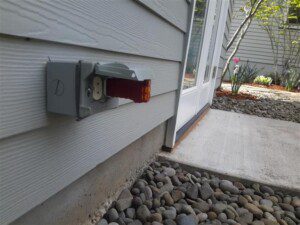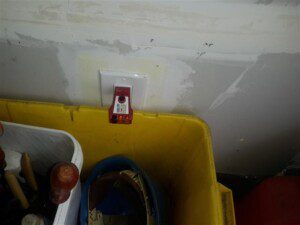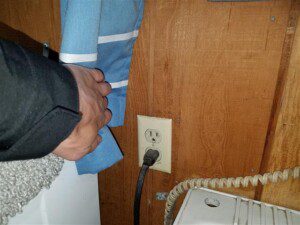Since their creation by Charles Dalziel in 1961, ground fault circuit interrupters (GFCI’s) have become a commonplace item in homes and have saved countless lives from electrocution. But how do these devices work and where should they be installed in order to provide maximum protection?

All outside outlets should be GFCI protected.
A GFCI’s function is to protect people from a ground fault, which is an unintentional current of electricity between a grounded surface and a source of electrical current. If a person comes in contact between an energized component (such as a damaged cord) and a grounded surface (such as a plumbing line) they would receive an electric shock, or even be electrocuted.

All garage outlets should be GFCI protected.
GFCI’s operate by sensing the amount of electricity leaving and returning from an outlet. If the amount of electricity returning to the outlet is less than the amount that left it, the GFCI is tripped and shuts off the supply of electricity. It only takes a difference of 5 milliamps for the device to trip, making it ideal for protecting people from electrical shock.

All outlets over countertops should be GFCI protected.
While other breakers protect the wiring to which they are attached, GFCI’s also protect against electric shock. Regular breakers operate by shutting off the electrical supply on a circuit that begins to draw more electricity than its amperage can handle. While this helps to protect the wiring circuits and prevent fires, these do not shut off the power before it becomes more than enough to kill a person.

All outlets within 6 feet of a water source should be GFCI protected.
In modern homes, GFCI’s are required within 6 feet of a source of water, which includes bathrooms, laundry areas, all countertops in kitchen areas, garages, outdoor receptacles, pool/spa areas, basements, and crawlspaces. One appliance that is an exception and should not be installed on a GFCI receptacle is a refrigerator, as food can spoil should the breaker trip and shut off the appliance.

Outlets near water sources, including washing machines, should be GFCI protected.
Lastly, standards apply according to when the home was built which means that older homes are not required to upgrade to modern standards. However, GFCI’s are a valuable safety device that should be considered in order to provide maximum protection.
